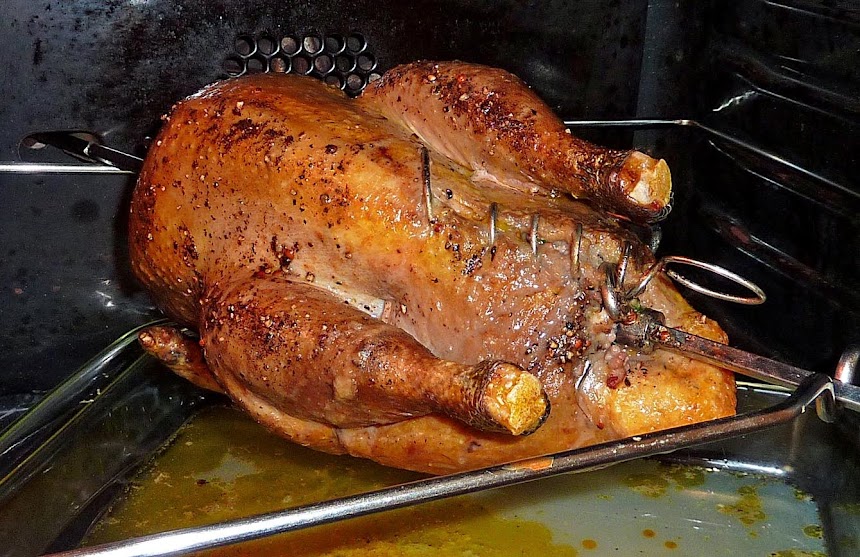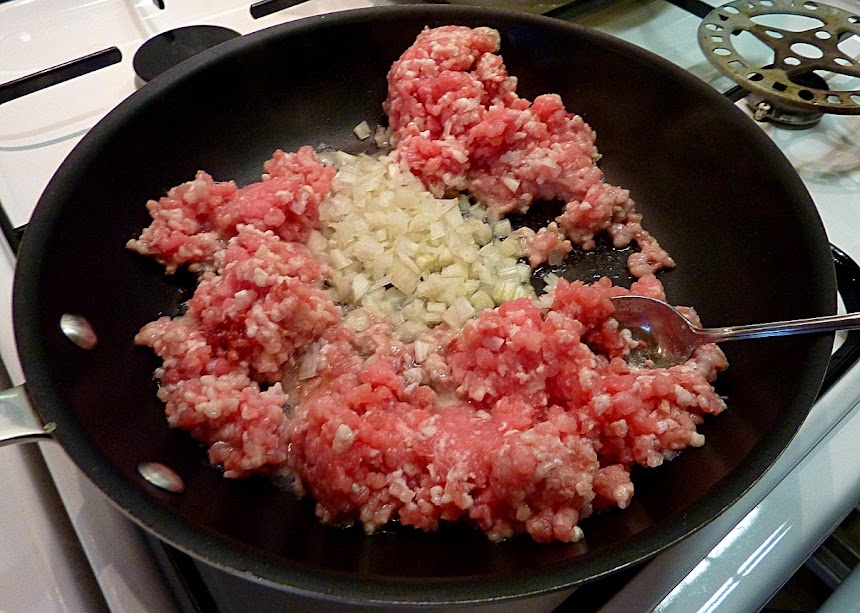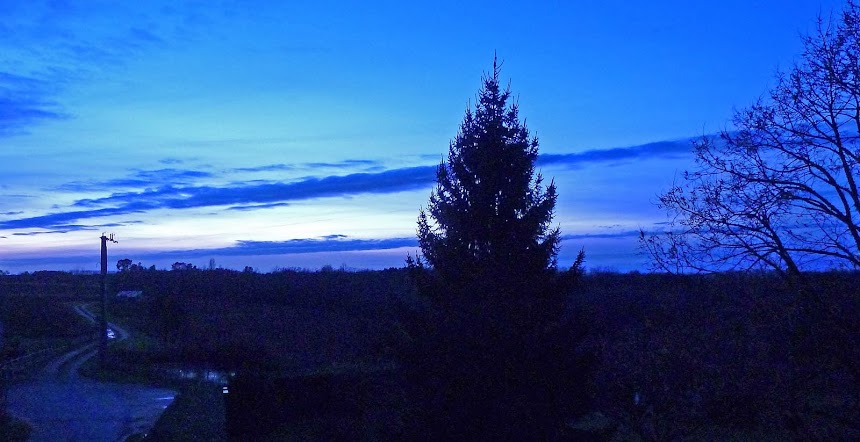It's going to be a busy morning. We have to get everything together for our drive down to southern Touraine for a New Year's Eve dinner — load up the car, get the dog psychologically prepared (she hates riding in the car), and make sure we don't forget anything. Cameras? Check. Batteries? Check. Android tablet? Check. Power supply? Check. Dogfood? Check. Leash? Check. Dog? Check...
And then there's the food and drink. We got oysters. It turned out that there was no special New Year's market in Saint-Aignan yesterday. There had been a market on Monday Dec. 23, and we assumed there would be one on Mon. Dec. 30 (the normal market day is Saturday). We drove down there yesterday morning and we were disappointed.
Two kinds of oysters (4 doz.) spending the night in our dirt-floored cold pantry downstairs
But suddenly our mood brightened. While there wasn't a full market, there was a truck parked on the main square. Out it it, a young man was selling oysters that he had brought up here from the town of Marenne and the island of Oléron, which is about 4 hours southwest of Saint-Aignan. On était sauvé. We bought four dozen Marenne-Oléron oysters, as they are called — two dozen of the ones called pleine-mer (open sea) and two dozen of the ones called fines de claires.
Like me, you probably can't tell which variety of oyster these are...
They are the same oysters, but they are treated differently. The pleine-mer [plehn-MEHR] oysters stay in seawater until they are harvested, sold, and served. They have their own particular taste. The fines de claires [feen-duh-KLEHR] are gathered in the sea and then put into salt ponds (claires) to spend the last three or four months of their life. They have a different taste because of that method of "finishing" — they're called fines because they are extra "refined". Millions of oysters from Marenne-Oléron, Brittany, and Normandy will be consumed tonight at New Year's Eve dinners all over France.
Bubbly wine made from grapes grown in our village
As I mentioned yesterday, before going to get the oysters we went down to the village hall and dropped off a CD we had burned after gathering up a total of about 130 photos. We figured the mayor or whoever on her staff is in charge of organizing her New Year's ceremony could pick out whatever photos they wanted to use for their slideshow or whatever. We hoped they wouldn't feel completely overwhelmed.
Right after lunch, the mayor came by and rang the bell at our front gate — she's our neighbor. Walt went out and talked to her. She said they were thrilled with the photos and had decided to use all of them. It was nice of her to stop and tell us. She urged us to attend the event on Saturday. Embarrassingly enough, we've never attended before. We'll have to make a big effort to get ourselves there this time. To thank us, she brought us a bottle of the local bubbly, which is made like Champagne but using local grapes like Chenin Blanc instead of Chardonnay.
Cornilles or black-eyed peas imported from Portugal, cooked
Finally, I cooked up a big pot of black-eyed peas yesterday for our New Year's Day dinner. For people from the U.S. South, it's considered good luck to eat black-eyed peas (called « cornilles » [kor-NEE-yuh] in France) on January 1. I love the old superstition, because I love black-eyed peas. Most French people seem never to have heard of them before. Luckily, they eat them in Portugal, so I can always find them, either dried or in cans, in the Portuguese products section in all the local supermarkets.
Beans bubbling in boiling broth on the stove
Black-eyed peas are beans, actually but they have much thinner and more delicate skins than other beans. And they have a distinctly different flavor compared to white beans like navy beans, French lingots, or Italian cannellini, or like red kidney beans and pinto beans. It's hard to describe, but the taste is kind of grassy and rich. It resembles the flavor of lentils, I think, and goes very well with duck, including the slow-cooked confit de canard that we'll have with them, and with pork and pork sausages. I cooked my "peas" in a broth flavored with onion, garlic, spices, and bay leaves in which I had simmered a big slice of salt pork to have with our Christmastime feast of collard greens.
Walnut biscotti by Walt, great for dunking in wine or coffee
Oh, and I almost forgot to mention that Walt made a big batch of crispy walnut biscotti to take to the friends who've invited us for dinner tonight. There they are.


















































